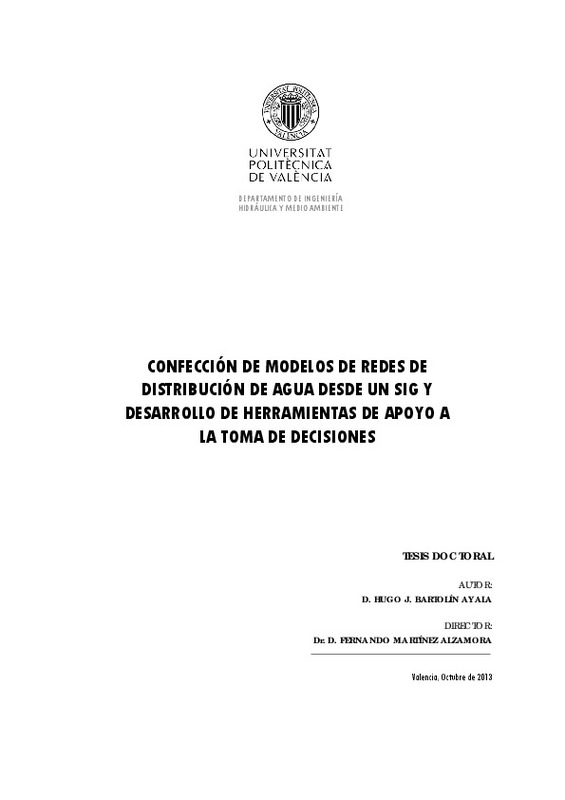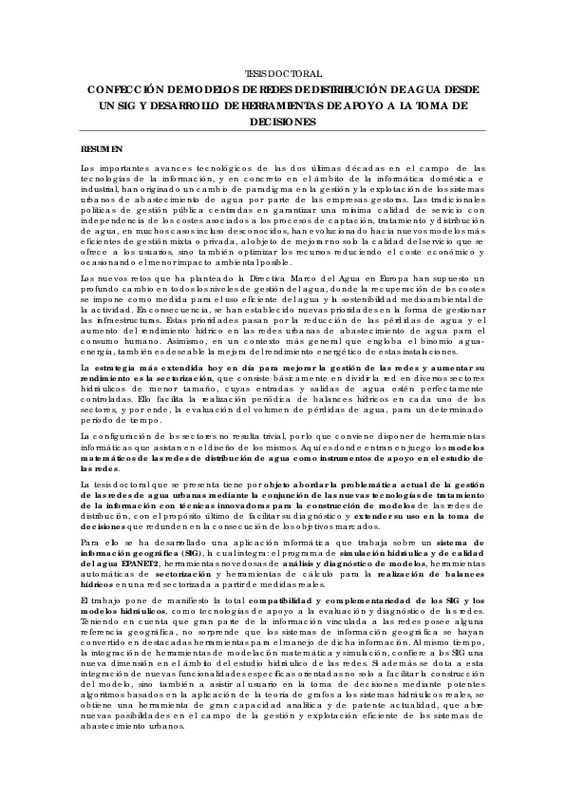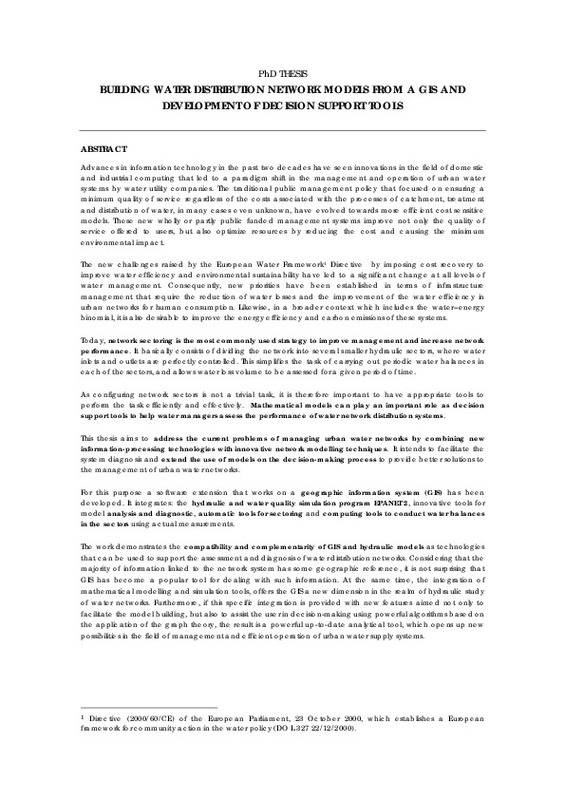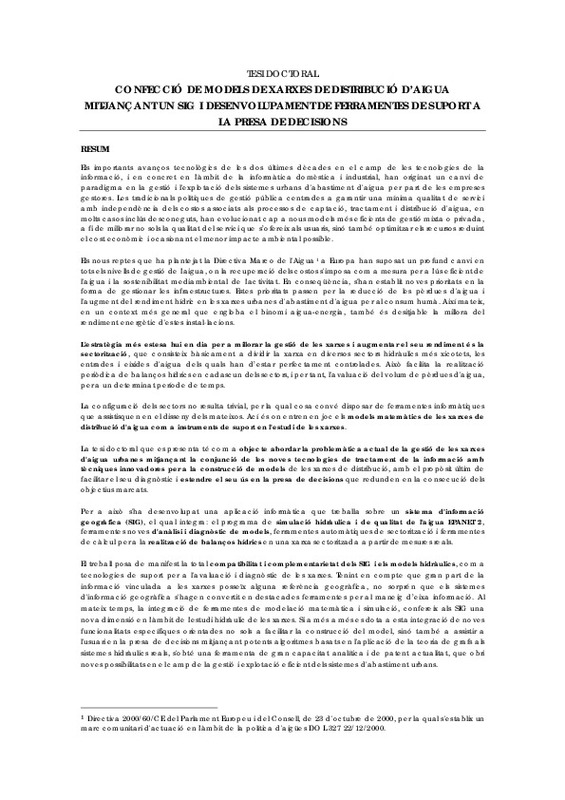|
Resumen:
|
Advances in information technology in the past two decades have seen innovations in the field of domestic
and industrial computing that led to a paradigm shift in the management and operation of urban water
systems by ...[+]
Advances in information technology in the past two decades have seen innovations in the field of domestic
and industrial computing that led to a paradigm shift in the management and operation of urban water
systems by water utility companies. The traditional public management policy that focused on ensuring a
minimum quality of service regardless of the costs associated with the processes of catchment, treatment
and distribution of water, in many cases even unknown, have evolved towards more efficient cost sensitive
models. These new wholly or partly public funded management systems improve not only the quality of
service offered to users, but also optimize resources by reducing the cost and causing the minimum
environmental impact.
The new challenges raised by the European Water Framework1 Directive by imposing cost recovery to
improve water efficiency and environmental sustainability have led to a significant change at all levels of
water management. Consequently, new priorities have been established in terms of infrastructure
management that require the reduction of water losses and the improvement of the water efficiency in
urban networks for human consumption. Likewise, in a broader context which includes the water--energy
binomial, it is also desirable to improve the energy efficiency and carbon emissions of these systems.
Today, network sectoring is the most commonly used strategy to improve management and increase network
performance. It basically consists of dividing the network into several smaller hydraulic sectors, where water
inlets and outlets are perfectly controlled. This simplifies the task of carrying out periodic water balances in
each of the sectors, and allows water loss volume to be assessed for a given period of time.
As configuring network sectors is not a trivial task, it is therefore important to have appropriate tools to
perform the task efficiently and effectively. Mathematical models can play an important role as decision
support tools to help water managers assess the performance of water network distribution systems.
This thesis aims to address the current problems of managing urban water networks by combining new
information-processing technologies with innovative network modelling techniques. It intends to facilitate the
system diagnosis and extend the use of models on the decision-making process to provide better solutions to
the management of urban water networks.
For this purpose a software extension that works on a geographic information system (GIS) has been
developed. It integrates: the hydraulic and water quality simulation program EPANET 2, innovative tools for
model analysis and diagnostic, automatic tools for sectoring and computing tools to conduct water balances
in the sectors using actual measurements.
The work demonstrates the compatibility and complementarity of GIS and hydraulic models as technologies
that can be used to support the assessment and diagnosis of water distribution networks. Considering that the
majority of information linked to the network system has some geographic reference, it is not surprising that
GIS has become a popular tool for dealing with such information. At the same time, the integration of
mathematical modelling and simulation tools, offers the GIS a new dimension in the realm of hydraulic study
of water networks. Furthermore, if this specific integration is provided with new features aimed not only to
facilitate the model building, but also to assist the user in decision-making using powerful algorithms based on
the application of the graph theory, the result is a powerful up-to-date analytical tool, which opens up new
possibilities in the field of management and efficient operation of urban water supply systems.
[-]
|













